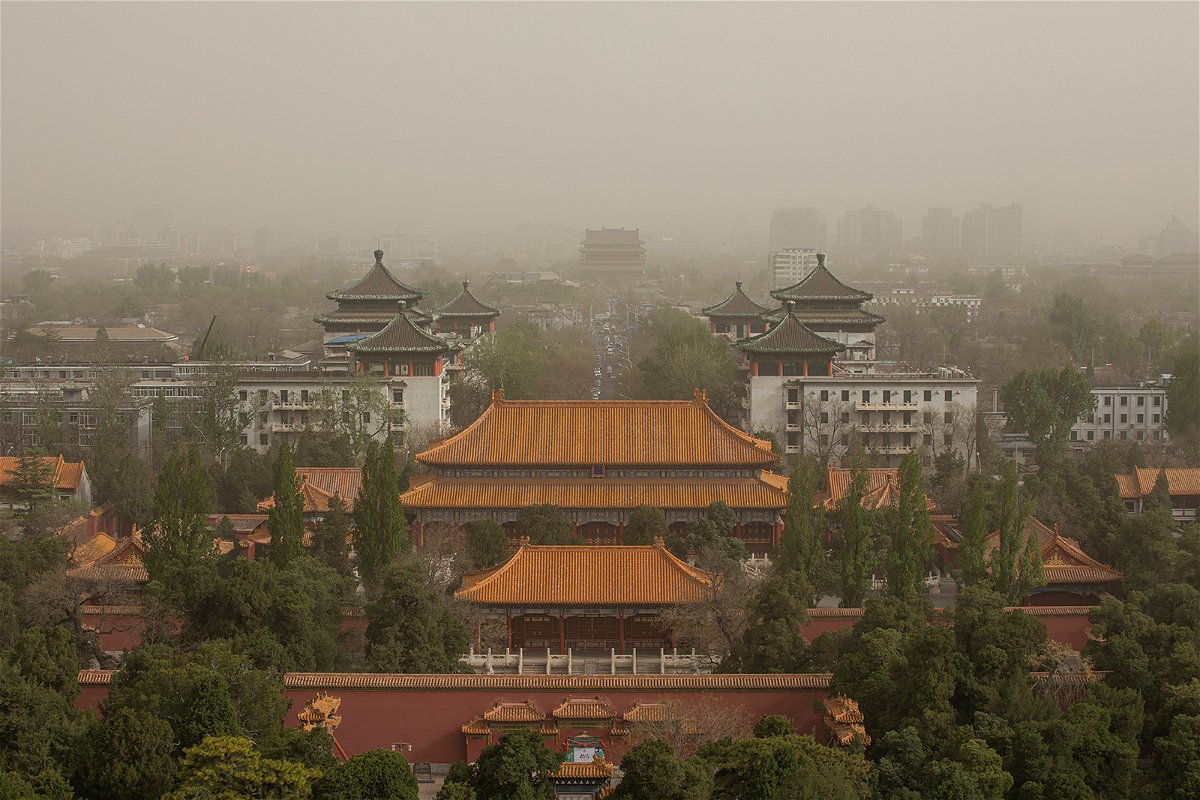Sandstorm hits Beijing and northern China for the fourth time in a month

A sandstorm darkens the sky over the Chinese capital Beijing on April 11.
By Chris Lau, CNN
A severe sandstorm has cloaked Beijing and China’s northeastern regions for the fourth time in a month forcing some residents to stay indoors to protect themselves from dense air pollution.
Images showed the Chinese capital engulfed in a cloud of orange haze on Monday which hung thick in the air into Tuesday, though conditions have begun to ease.
Beijing authorities told children and the elderly to stay indoors, and healthy adults were advised to refrain from outdoor activity. Residents were also reminded to keep their windows shut and wear masks and face shields.
On Monday, the air quality index soared to “severely polluted” levels, according to Beijing Municipal Ecological and Environmental Monitoring Center.
Concentrations of PM10 particles exceeded 1,321 micrograms per cubic meter at 9 p.m. on Monday, according to the center — almost 30 times the daily average guideline of 45 micrograms per cubic meter set by the World Health Organization.
PM10 are particles of pollution that are less than 10 micrometers in diameter and can irritate your eyes and nose and travel to your lungs.
Even smaller particles referred to as PM2.5 can travel deeper into your lungs and potentially enter your bloodstream. Levels of PM2.5 have been “hazardous” in Beijing for some of the past 48 hours, according to the Air Quality Index, which monitors real-time air quality in major cities worldwide.
Beijing is regularly hit with sandstorms in the spring with the smog made worse by rising industrial activity and rapid deforestation throughout northern China.
The latest sandstorm is the fourth to hit the country since March 10, and the eighth since the start of the year, state media reported.
The most severe sandstorm so far this year occurred on March 22, when PM10 particles hit 1,667 micrograms per cubic meter, according to the Beijing Municipal Ecological and Environmental Monitoring Center.
This time, the affected areas stretched as far south as Shanghai to parts of Heilongjiang, the country’s northernmost province, according to China’s Central Meteorological Observatory.
Other areas affected included Xinjiang, Inner Mongolia, Gansu, Ningxia, Shanxi, Hebei, Tianjin, Shandong, Henan, Jiangsu, Anhui and Hubei, according to the national observatory.
China’s National and Grassland Administration said sand and dust from the southern part of Mongolia and the western part of Inner Mongolia were carried southeast by air currents, triggering the present storm.
One Chinese internet user on Weibo, China’s heavily censored equivalent of Twitter, complained about the pungent smell.
“It smells very earthy,” she said.
Another user compared the storm to the sci-fi film “Blade Runner” and urged others to “just wear protection” when going out.
The-CNN-Wire
™ & © 2023 Cable News Network, Inc., a Warner Bros. Discovery Company. All rights reserved.